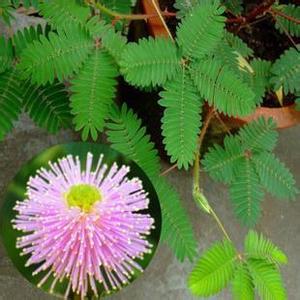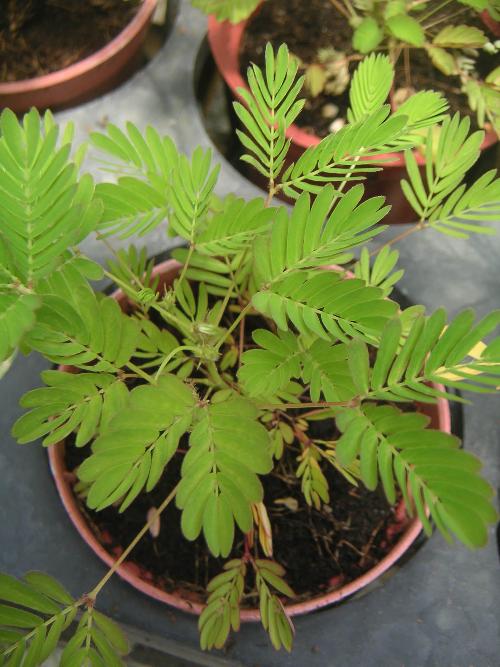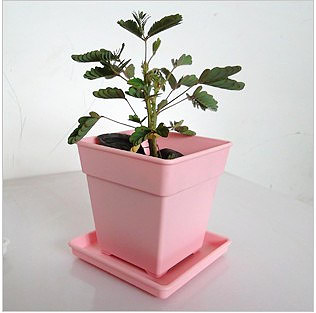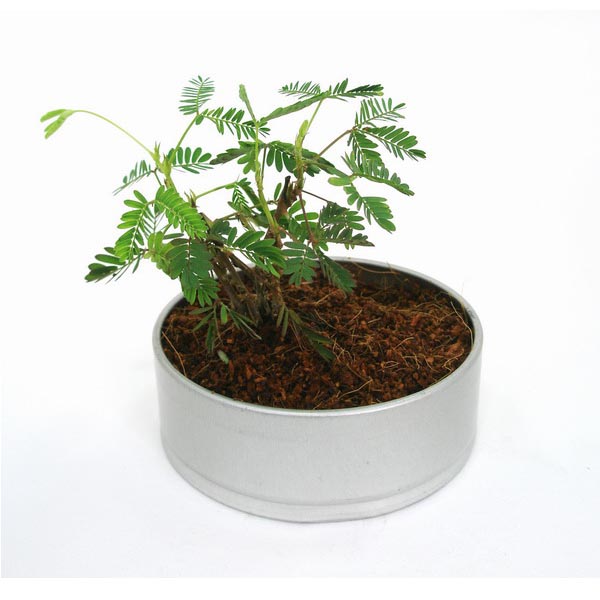Five skills not to be missed in the cultivation of mimosa
Mimosa is a lovely plant that shrinks its leaves when touched. Its flowers and leaves are of great ornamental value. Nowadays, many people like to raise potted plants at home, and mimosa is a good choice. Many people like mimosa, but many people can't grow it. The editor teaches you five skills that should not be missed in the cultivation of mimosa.

Brief introduction of mimosa
Mimosa is a perennial herb or subshrub of Leguminosae, which is named mimosa because its leaves respond to heat and light and close immediately when touched by external forces. Native to tropical South America, it likes to be warm and humid, and is not strict with the soil. The flower is pink, shaped like a fluffy ball, delightful. Pods bear fruit after flowering, and the fruit is flat and round. The leaves are feathery and compound leaves are alternate and arranged in palms. The flowers, leaves and pods of mimosa have better ornamental effect, and are easy to survive, so they are suitable for balcony, indoor potted flowers, and can also be planted in the courtyard. Mimosa is different from other plants. When touched by the outside world, the petiole is drooping and the small leaves are closed. This action is understood as "shyness", so it is called mimosa, mimosa and ugly grass.
Culture methods of mimosa
1. Soil: mimosa has strong adaptability and lax requirements on soil, grows well in moist and fertile soil, and sows in the culture soil mixed with 2 parts of rotten leaf soil, 3 parts of garden soil and 5 parts of fine yellow sand.
2. Watering: mimosa likes to be wet and watered once a day during the summer growing season.
3. Sunshine: mimosa likes plenty of light and is slightly resistant to semi-shade.
4. Temperature: mimosa, as a potted ornamental flower, should be moved into the sunny place indoors in winter and can survive the winter safely at room temperature of 10-12 ℃.
5. Fertilization: mimosa does not need much fertilizer during its growing period, so you can apply dilute liquid fertilizer for 2-3 times, do not grow in vain, because mimosa is mainly used as an interesting foliage flower, small is better.

Matters needing attention in Mimosa Culture
First, to prevent frost injury, mimosa is suitable for growing in a warm environment, and the suitable temperature is between 20 degrees and 28 degrees. If the temperature is too low, it will hinder its growth. Because the winter temperature is too low, so less watering, avoid freezing damage to the roots, watering time is about the highest temperature of the day, if the temperature is lower than 10 degrees, it is best to give certain protection measures.
Second, prevention of diseases and insect pests, mimosa in general, there are few diseases and insect pests, and the most common pest is slug, if pests are found, you can sprinkle some lime powder for control.
Third, fertilize according to your own situation when fertilizing, and mimosa can be fertilized about once a month. If you think that the growth of potted mimosa is too large and good-looking, you can give up fertilization to mimosa.

Planting method of mimosa
Mimosa is generally propagated by sowing, and the sowing time is from late March to early April. Spread the seeds evenly on the fine soil and cover the soil for about 1.5m. When the temperature is about 18 ℃, the seedlings can emerge in about 10 days. When mimosa is managed in the field, when the distance between plants in the field is 25 to 30 meters, it is necessary to loosen the soil, hoe and water in time, and when potted indoors, water it every three days in summer.
Mimosa can be cultivated in ordinary soil, but it is best in loose, fertile soil. It doesn't need much fertilizer during its growing period. It is OK to apply dilute liquid fertilizer for 2 or 3 times when applying fertilizer, not too much fertilizer. Do not be an apprentice, because mimosa is mainly an interesting foliage flower, small is better. The planting technique of mimosa is relatively simple and the management is extensive. The requirements of climate, sunshine and soil are not strict. I like a warm and humid environment.
Maintenance of mimosa
During the growth period, mimosa can be irrigated with rotten dilute liquid fertilizer every 10 days or so. When mimosa is transplanted indoors when potted ornamental flowers, it is best to move into the sunny place indoors. At the same time, mimosa likes to be moist. It is watered once a day in summer, and the soil is required to be deep, fertile and moist. Moreover, mimosa is a cold-resistant plant. The indoor temperature should be 18 degrees in winter, or it will die on its own.

Why is the mimosa shy?
Reason one
Plants are different from animals. Plants have no nervous system and no muscles can not sense external stimuli, but why mimosa is shy has something to do with the nervous system. Mimosa is supported by tiny reticular actin, which falls off when closed, resulting in closed movement. Thigh actin contains muscle fibers, which is very rare in plants.
The stress behavior of mimosa takes only 0.08 seconds before and after the occurrence, that is to say, the conduction velocity is as high as 10cm/s, which can be said to be very fast. It takes about 5-10 minutes to restore the original state.
Reason two
If touched, the leaves of mimosa will close immediately, the bigger the touch, the faster they close, and finally the whole leaves droop as if they are powerless. Mimosa leaves and petioles have a special structure, and there is a leaf pillow in the middle, which is the most sensitive to stimuli. Once it touches the stimulus, it directly spreads to the leaf pillow at the base of the petiole, causing the leaves to close.

The above is the editor's introduction to the five skills that should not be missed in the cultivation of mimosa. If you still need it, you can search the Internet for other relevant information so that you can better cultivate mimosa. Here, the editor wishes you all a happy breeding and happy life.
Mimosa is supported by tiny reticular actin, which falls off when closed, resulting in closed movement. Thigh actin contains muscle fibers, which is very rare in plants.
The stress behavior of mimosa takes only 0.08 seconds before and after the occurrence, that is to say, the conduction velocity is as high as 10cm/s, which can be said to be very fast. It takes about 5-10 minutes to restore the original state.
Reason two
If touched, the leaves of mimosa will close immediately, the bigger the touch, the faster they close, and finally the whole leaves droop as if they are powerless. Mimosa leaves and petioles have a special structure, and there is a leaf pillow in the middle, which is the most sensitive to stimuli. Once it touches the stimulus, it directly spreads to the leaf pillow at the base of the petiole, causing the leaves to close.

The above is the editor's introduction to the five skills that should not be missed in the cultivation of mimosa. If you still need it, you can search the Internet for other relevant information so that you can better cultivate mimosa. Here, the editor wishes you all a happy breeding and happy life.
Related
- Wuhan Hospital Iron Tree Blooming Result Was Instantly Frightened by the Gardener Master
- Which variety of camellia is the most fragrant and best? Which one do you like best?
- What is the small blue coat, the breeding methods and matters needing attention of the succulent plant
- Dormancy time and maintenance management of succulent plants during dormancy
- Minas succulent how to raise, Minas succulent plant pictures
- What are the varieties of winter succulent plants
- How to raise succulent plants in twelve rolls? let's take a look at some experience of breeding twelve rolls.
- Attention should be paid to water control for succulent plants during dormant period (winter and summer)
- Watering experience of twelve rolls of succulent plants
- Techniques for fertilizing succulent plants. An article will let you know how to fertilize succulent plants.



